Acute myeloid leukemia (AML) is a hematologic cancer characterized by rapid proliferation of abnormal myeloid cells in bone marrow and blood. Despite its rarity, AML poses significant therapeutic challenges due to its aggressiveness and diverse clinical presentations.
Subtypes and Diagnosis
AML encompasses various subtypes distinguished by affected blood cell lineages and genetic abnormalities. Accurate diagnosis relies on comprehensive evaluation of peripheral blood, bone marrow aspirates, and cytogenetic analyses to identify specific subtypes and prognostic markers.
Etiology and Risk Factors
While AML’s exact cause is uncertain, identified risk factors include radiation exposure, chemotherapy, benzene, and genetic predispositions like Down syndrome. Understanding these factors aids in prevention and early detection.
Diagnostic Modalities
Diagnostic methods include blood tests, bone marrow biopsy, and molecular profiling to pinpoint targetable mutations for personalized treatment.
Treatment Approaches
Treatment aims for complete remission, achieved through chemotherapy, targeted therapy, and stem cell transplantation.
Induction chemotherapy, typically using cytarabine (Cytosar-U®) and anthracycline (e.g., daunorubicin, idarubicin) regimens, initiates remission. Consolidation therapy eliminates residual cells, often employing high-dose cytarabine (Ara-C). Maintenance therapy, utilizing drugs like azacitidine (Vidaza®) and decitabine (Dacogen®), aims to prolong remission.
Targeted agents, focusing on specific molecular abnormalities like FLT3 and IDH1/2 mutations, offer promising treatment options for refractory AML. Examples include midostaurin (Rydapt®) and gilteritinib (Xospata®) for FLT3-mutated AML, and enasidenib (IDHIFA®) and ivosidenib (Tibsovo®) for IDH1/2-mutated AML.
Allogeneic stem cell transplantation remains a curative option, replacing diseased marrow with healthy donor cells for long-term disease control.
Emerging therapies for AML hold promise in revolutionizing treatment approaches. Targeted therapies, such as those targeting FLT3 and IDH mutations, offer more precise and effective options. Immunotherapies, including CAR-T cell therapy and checkpoint inhibitors, harness the immune system to target leukemia cells. Furthermore, advancements in precision medicine, guided by molecular profiling, enable tailored treatments based on individual genetic profiles. These advancements signify a shift towards more personalized and effective AML management, potentially improving outcomes and quality of life for patients.
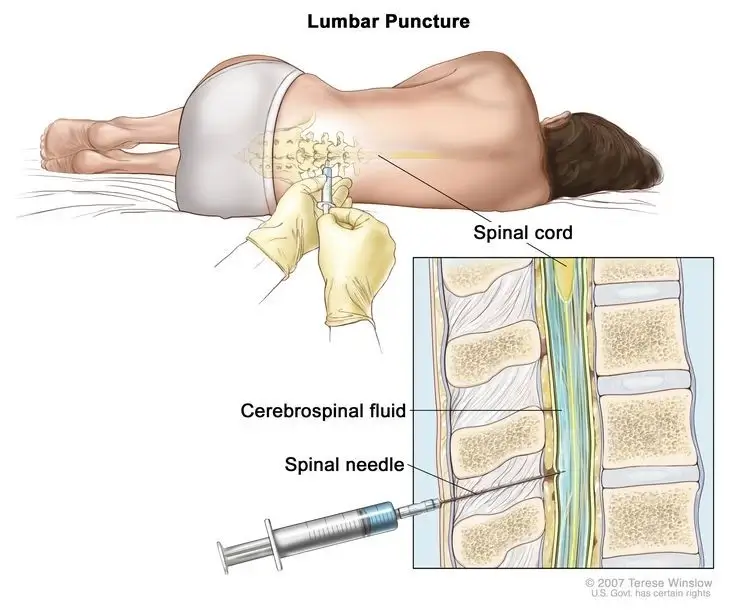
Figure 1 Lumbar puncture for Bone Marrow Biopsy, the most common type of diagnostic test for AML
Source: >>
To maintain competitiveness in the Acute Myeloid Leukemia (AML) sector in the short to mid-long term, it is crucial to understand the entirety of the AML developmental pipeline. This includes staying updated on the evolving landscape, competitor strategies, and upcoming advancements.

Figure 2 Development Pipeline in AML domain
Profiles of key stakeholders advancing Acute Myeloid Leukemia (AML) solutions provide valuable insights into their financial standing, product portfolios, and recent innovations within the sector.
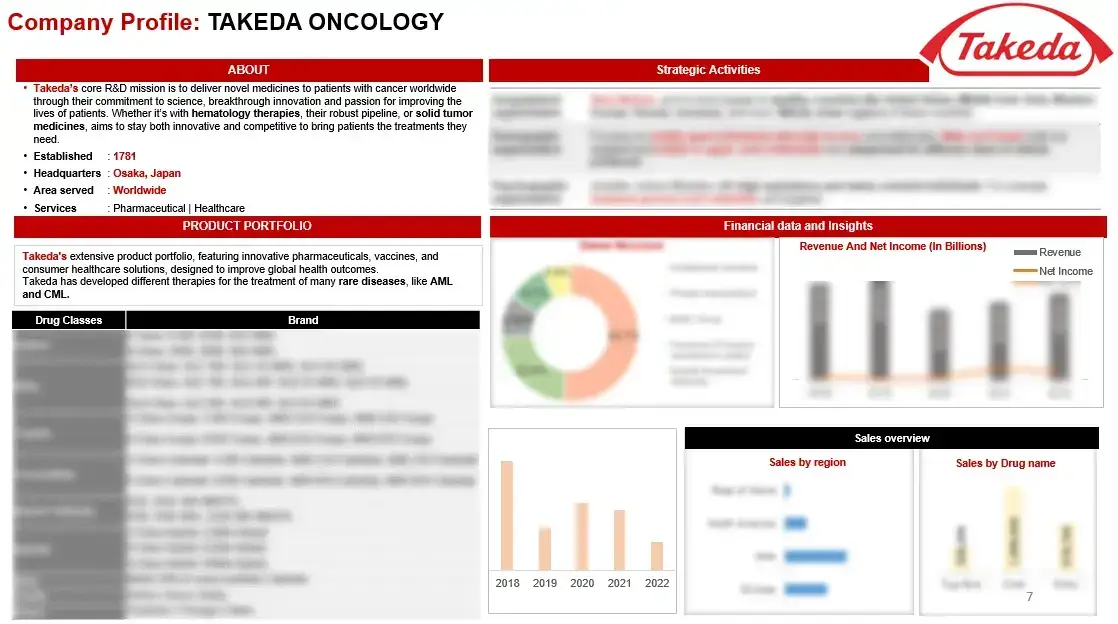
Figure 3 Company Profile
This report explores patents linked to Acute Myeloid Leukemia (AML), spotlighting notable innovations and emphasizing opportunities for enhancement or collaboration within the domain.
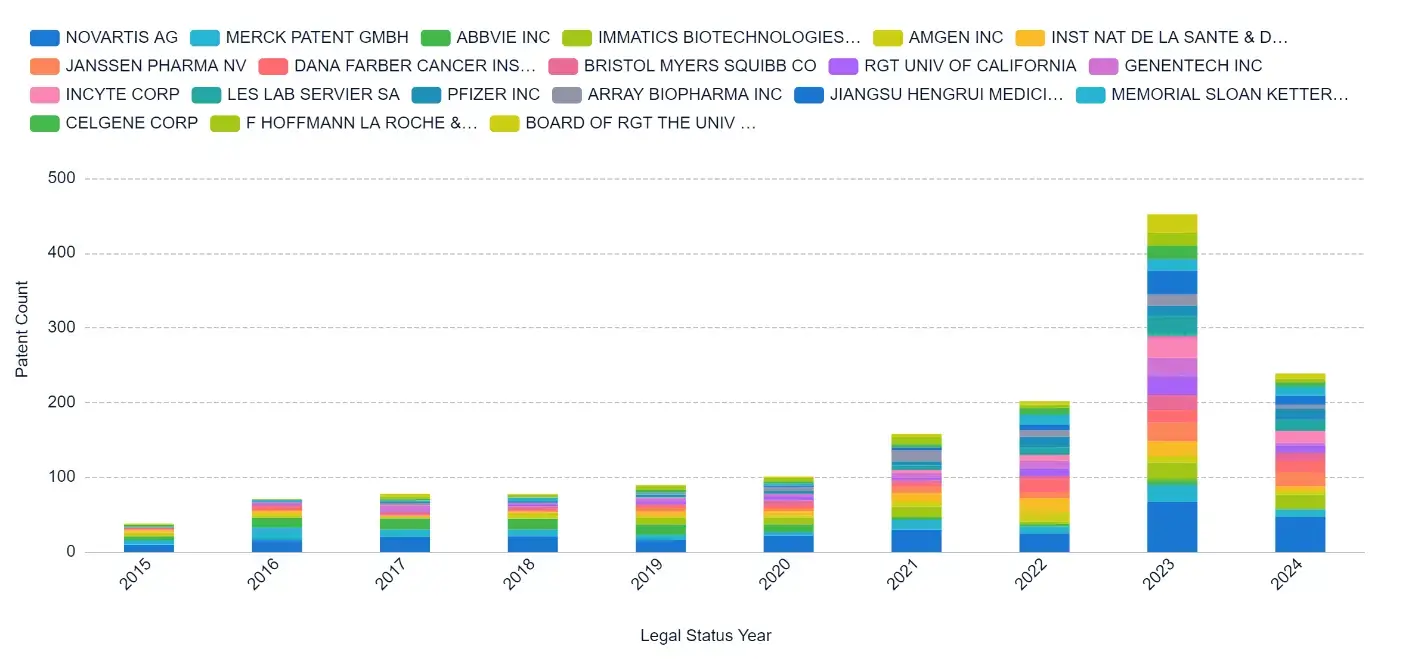
Figure 4 Patent count of std.current assignees by legal status year
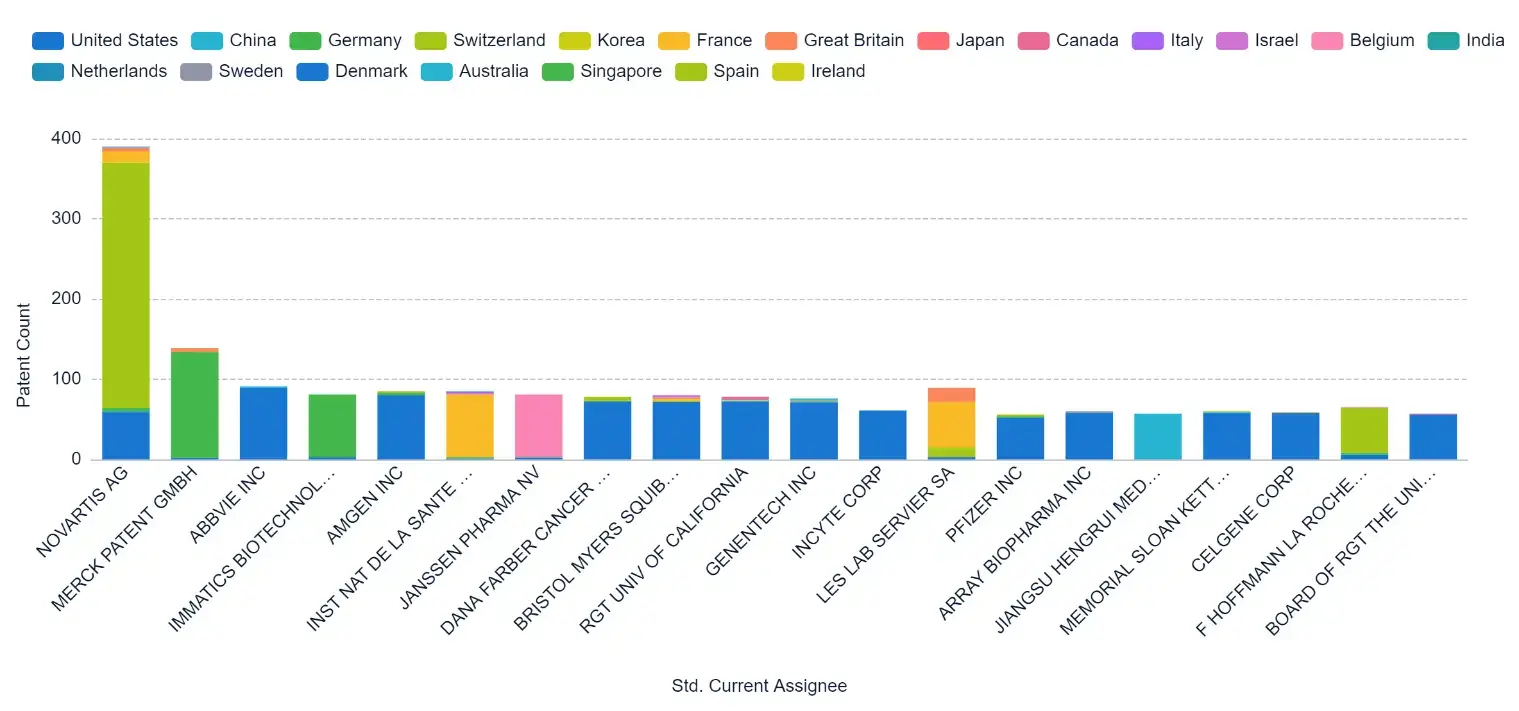
Figure 5 Region-wise patent count of Std. current assignees
This report on Acute Myeloid Leukemia (AML) anticipates upcoming advancements, outlines pathways for expansion, and provides critical insights into market dynamics, including scale, revenue forecasts, and growth opportunities.
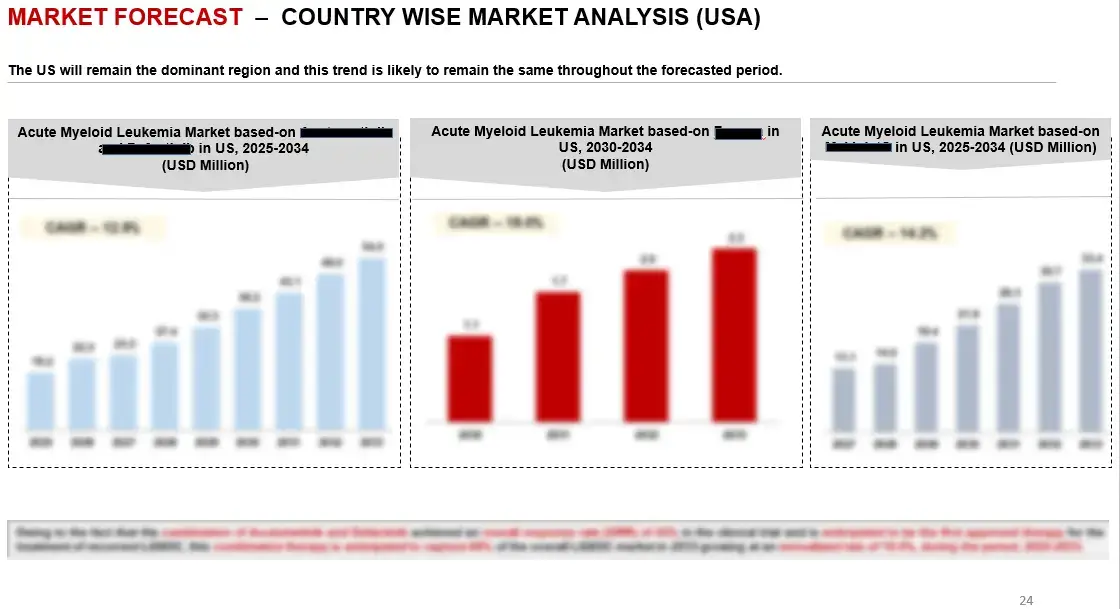
Figure 6 Geographical region wise Market Forecast (2025-2034)
The competitive landscape section provides a comprehensive analysis of key market players in the Acute Myeloid Leukemia (AML) domain, including their market shares and concise profiles detailing strengths, weaknesses, and strategies. Additionally, it offers competitive benchmarking services for comparative performance insights and industry standards.
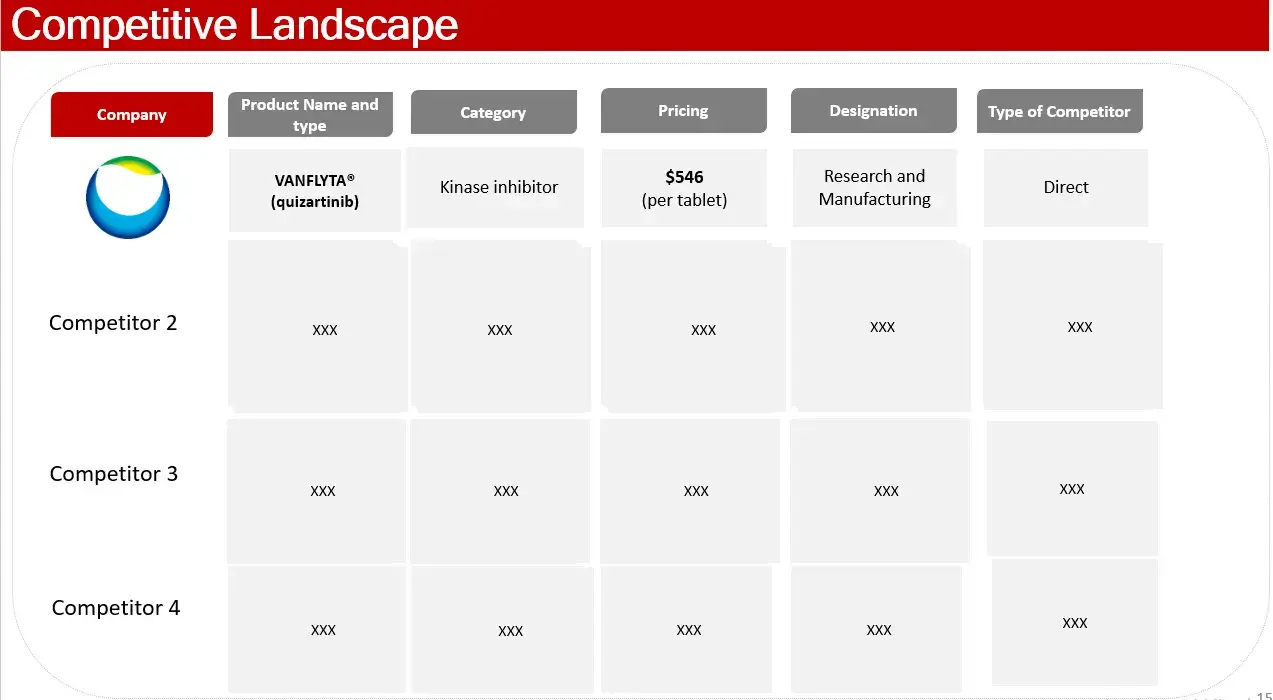
Figure 7 Direct/In-direct Competitor
In order to give the most precise estimations and forecasts, Wissen Research uses an extensive and iterative research approach that is focused on reducing deviation. The company blends top-down and bottom-up methodologies for market segmentation and quantitative estimation. In addition, data triangulation, which examines the market from three separate angles, is a recurrent topic present in all of our research studies. Important components of the approach used for all of our studies include the following:
Preliminary data mining
On a wide scale, unprocessed market data is collected. Continuous data filtering makes sure that only verified and authenticated sources are taken into account. Additionally, data is extracted from a wide range of reports in our repository and from a number of reputable premium databases. We gather information from raw material suppliers, distributors, and purchasers to help with this since understanding the entire value chain is crucial for a thorough understanding of the market.
Surveys, technical symposia, and trade magazines are used to gather information on technical concerns and trends. Technical information focusing on white space and freedom of movement is also obtained from an intellectual property standpoint. Additionally, information on the industry’s drivers, constraints, and pricing patterns is obtained. As a result, a variety of original data are included in the material that is then cross-validated and certified with published sources.
Statistical model
We use simulation models to generate our market projections and estimates. Every study receives a special model that is tailored to it. Data for market dynamics, the technology environment, application development, and pricing patterns are gathered and supplied into the model all at once for analysis. The relative relevance of these factors is investigated, and their impact on the forecast period is assessed, using correlation, regression, and time series analysis. The process of market forecasting combines technological analysis with economic strategies, practical business acumen, and subject expertise.
Econometric models are frequently used for short-term forecasting, but technology market models are typically employed for long-term forecasting. These are based on a confluence of the business environment, regulatory environment, economic projection, and technical landscape. In order to develop global estimates, it is preferable to estimate markets from the bottom up by integrating data from key regional markets. This is required to ensure accuracy and a complete comprehension of the subject. Among the variables taken into account for forecasting are:
Regulations and anticipated developments
We give these criteria weights and use weighted average analysis to assess their market influence in order to calculate the anticipated market growth rate.
Data Collection Matrix:
Primary research | Secondary research |
· Manufacturers · Technology distributors and wholesalers · End-user surveys · surveys | · Company reports and publications · Government publications · Independent investigations · Economic and demographic data · Online searches · Research reviews · Reference customers |
1. Executive Summary and Introduction
1.1 Overview of Acute Myeloid Leukemia (AML)
1.1.1 Definition and Classification of AML
1.1.2 Scope and Applications of AML Research
1.1.3 Benefits and Current State of AML Therapies
1.2 Key Findings
1.3 Market Insights and Highlights
1.4 Research Background
1.5 Scope and Methodology
2. Technological Landscape of AML
2.1 Types of Acute Myeloid Leukemia (AML)
2.1.1 Classification by Cytogenetic Abnormalities
2.1.2 Classification by World Health Organization (WHO)
2.2 Pathophysiology and Characteristics
2.3 Emerging Technologies in AML Research
3. Market Dynamics
3.1 Market Drivers and Challenges
3.2 Regulatory Landscape in AML Research
4. Patent Analysis
4.1 Top Assignees in AML Technology
4.2 Geography Focus of Top Assignees
4.3 Legal Status of AML Patents
4.4 Assignee Segmentation
4.5 Network Analysis of Top Collaborating Entities in AML Patent Applications
4.6 Technology Evolution in AML
4.7 Key Patents in AML
4.8 Patent Trends and Innovations
4.9 Key Players and Patent Portfolio Analysis
5. Clinical Trial Analysis
5.1 Overview of AML Clinical Trials
5.2 Analysis by Trial Registration Year
5.3 Analysis by Phase of Development
5.4 Analysis by Number of Patients Enrolled
5.5 Analysis by Status of Trial
5.6 Analysis by Study Design
5.7 Analysis by Intervention Type
5.8 Analysis by Geography
5.9 Analysis by Key Sponsors/Collaborators
6. Market Forecast (2024-2034)
6.1 Methodology
6.2 Assumptions
6.3 Projected Growth of AML Market (2024-2034)
6.3.1 Global AML Market (2024-2034)
6.3.1.1 By Treatment
6.3.1.1.1 Targeted Drugs and Immunotherapy
6.3.1.1.2 Chemotherapy
6.3.1.2 By Route of Administration
6.3.1.2.1 Oral route
6.3.1.2.2 Injectable
6.3.2 Market Value Forecast in North America, 4 EU, and Asia Pacific (2024-2034)
6.3.2.1 By Treatment
6.3.2.1.1 Targeted Drugs and Immunotherapy
6.3.2.1.2 Chemotherapy
6.3.2.2 By Route of Administration
6.3.2.2.1 Oral route
6.3.2.2.2 Injectable
7. Competitive Landscape
7.1 Benchmarking Parameters
7.2 Scoring of Different Companies
7.3 Top Company Profiles
7.3.1 AbbVie Inc.
7.3.2 Novartis AG
7.3.3 Pfizer Inc.
7.3.4 Roche Holding AG
7.3.5 Celgene Corporation
7.3.6 Amgen Inc.
7.3.7 Takeda Pharmaceutical Company Limited
7.3.8 Bristol-Myers Squibb Company
7.3.9 Johnson & Johnson
7.4 Product Portfolio Analysis
7.5 Recent Developments and Strategies
8. Future Outlook and Market Opportunities
8.1 Technological Advancements in AML Research
8.2 Unmet Needs and Potential Market Gaps
9. Conclusion
10. Appendix
10.1 Glossary of Terms
10.2 List of Abbreviations
S.no | Key Highlights of Report | |
1. | Patent Analysis | · Top Assignee · Geography focus of top Assignees · Assignee Segmentation · Network analysis of the top collaborating entities in Acute Kidney Injury (AKI) therapy patent applications · Technology Evolution · Key Patents · Application and Issued Trend · Key technology |
2. | Market analysis | · Current Treatment Options · Emerging Therapies and Research Developments (by product analysis and scientific analysis) · Strategic activities (Collaboration/Mergers/Agreements/Partnerships/Acquisitions taken place by analyzed companies) · Therapeutic activity of drugs · Company portfolio |
3. | Clinical Trials | · Analysis of clinical trial through graphical representation · Coverage of treatments from pre-clinical phases till commercialization (also including terminated and completed studies) |
4. | Forecast | · Detailed comprehension of the historic, current and forecasted trend of market by analysis of impact of these treatments on the market · Drivers and barriers |
5. | Key Players | · Detailed profiles of the key players that are engaged in the development of approved drugs |
6. | Opportunity Analysis | · Technology evolution based on problem solution · Potential licensees · Geography of suppliers · Treatment trends · Unmet needs · Opportunity of new treatments |
7. | KOLs | · A detailed analysis and identification of the key opinion leaders (KOLs), shortlisted based on their contributions |
8. | SWOT | · SWOT analysis for treatments · Market Access |
LIST OF FIGURES
Figure number | Description |
Figure 1 | Terminology of Acute Myeloid Leukemia Over The Years |
Figure 2 | Acute Myeloid Leukemia– History and Present |
Figure 3 | Projection of Acute Myeloid Leukemia till 2034 in different geographies |
Figure 4 | Technology Categorization For Acute Myeloid Leukemia therapies |
Figure 5 | Recent Technology Trends in Acute Myeloid Leukemia therapies |
Figure 6 | Technology Evolution in Acute Myeloid Leukemia therapies |
Figure 7 | Geographical Distribution of Patents of Top Assignees |
Figure 8 | Assignee Segmentation (Companies) |
Figure 9 | Assignee Segmentation (Educational Establishment) |
Figure 10 | Patent Based Key Insights Of xx |
Figure 11 | Patent Based Key insights of xx |
Figure 12 | Patent Based Key insights of xx |
Figure 13 | Geographic Distribution of the Universities/Research Organizations Filling Patents On Various Technology advancements |
Figure 14 | Key Summary Regarding the Patent Filing On Acute Myeloid Leukemia |
Figure 15 | Product Pipeline of Different therapeutic approaches with Companies Name |
Figure 16 | Portfolio for Government Approved Hepatic medications |
Figure 17 | Key Growth Drivers for Acute Myeloid Leukemia Market |
Figure 18 | Restraints for Acute Myeloid Leukemia Market |
Figure 19 | xx Portfolio (Top Player) |
Figure 20 | xx Portfolio (Top Player) |
Figure 21 | xx Portfolio (Top Player) |
Figure 23 | xx Portfolio (Top Player) |
Figure 24 | xx Portfolio (Top Player) |
Figure 25 | xx Portfolio (Start-up) |
Figure 26 | xx Portfolio (Start-up) |
Figure 27 | xx Portfolio (Start-up) |
Figure 28 | Strategic Activities Including Collaboration, Partnerships and Acquisitions |
Figure 29 | Research Methodology for Patent, Selection and Analysis |
LIST OF GRAPHS
Graph number |
Description |
Graph 1 | Problem Solution Analysis |
Graph 2 | Top Assignees in Acute Myeloid Leukemia treatment therapy |
Graph 3 | Technology Focus of Top Assignees (IPC-CPC Classes) |
Graph 4 | Top Countries of Origin of Patents |
Graph 5 | New entrants in AML field |
Graph 7 | Legal Status |
Graph 8 | Most Cited Patents |
Graph 9 | Patents with Largest Invention Families |
Graph 10 | Most Claim-Heavy Patents |
Graph 11 | Filing Trends |
Graph 12 | Weighted Scores for Top xx Players According to Benchmarking Criteria |
Graph 13 | Acute Myeloid Leukemia (CAGR: 2024-2034) |
Graph 14 | Acute Myeloid Leukemia Market Share: Distribution by Key Geographical Area, 2024-2034 |
LIST OF TABLES
Table number | Description |
Table 1 | Parameters included and excluded for conducting the analysis |
Table 2 | Technology Classes with Definitions |
Table 3 | Patent Litigation |
Table 4 | Highest Market Valued Patents |
Table 5 | SWOT Analysis of Top 3 Players |
Table 6 | Parameters and their score for Benchmarking |
Table 7 | Weighted scores for top 5 players according to benchmarking criteria |
© Copyright 2024 – Wissen Research All Rights Reserved.